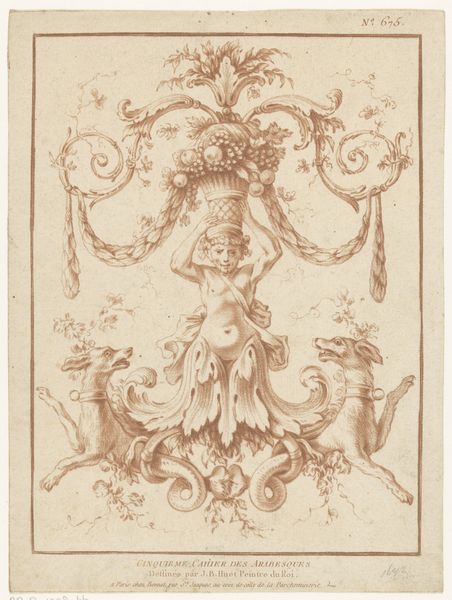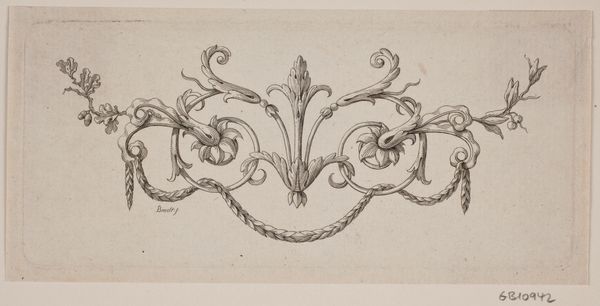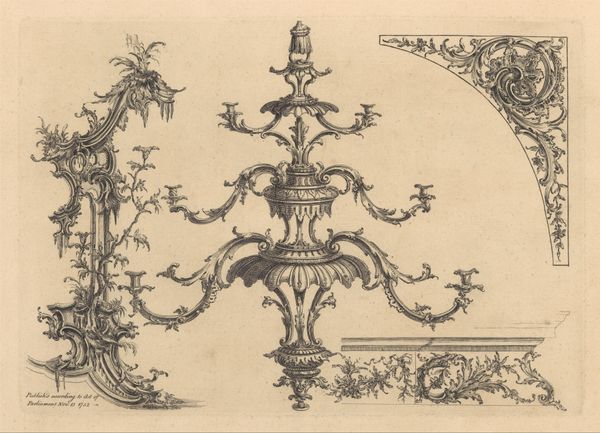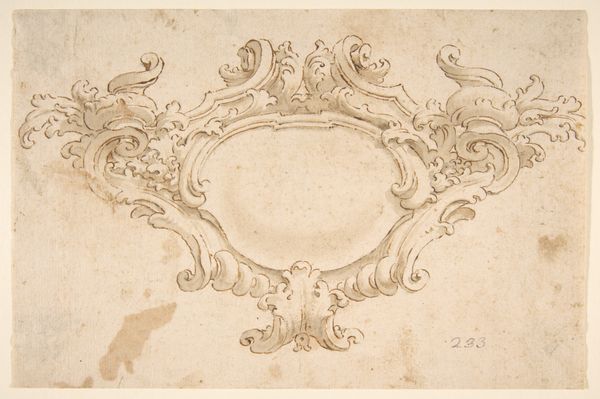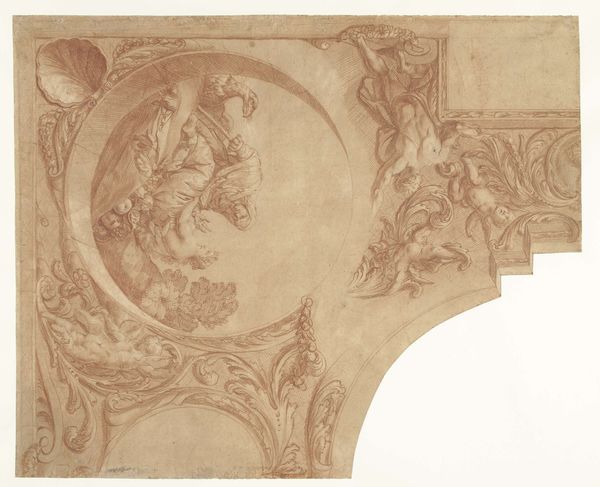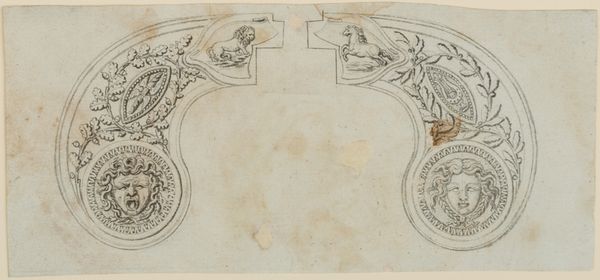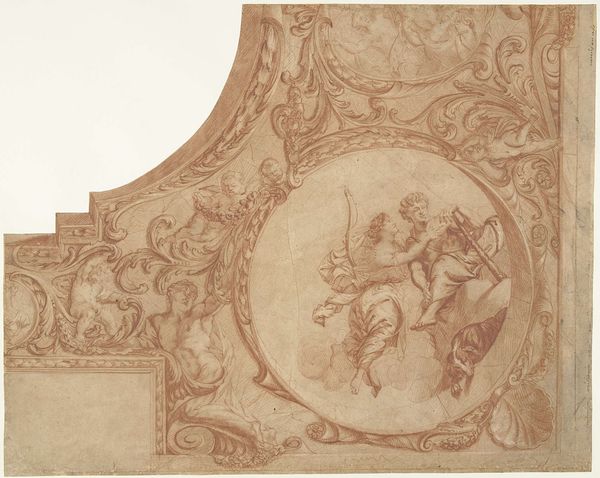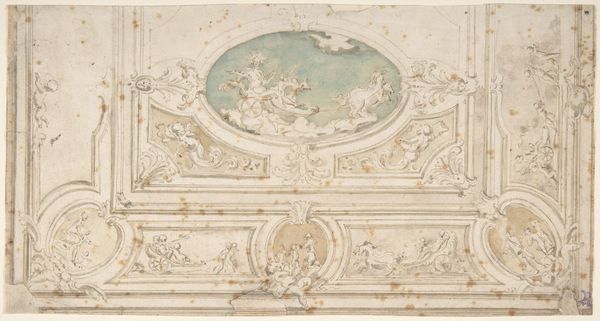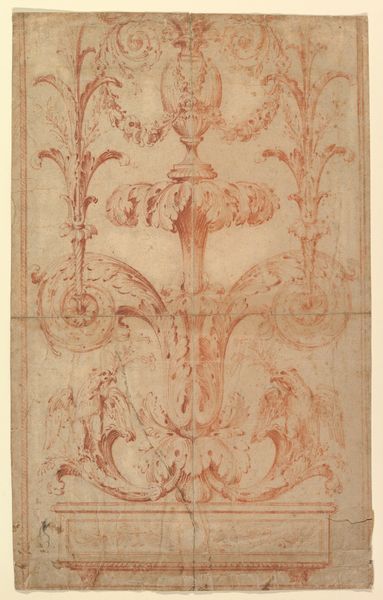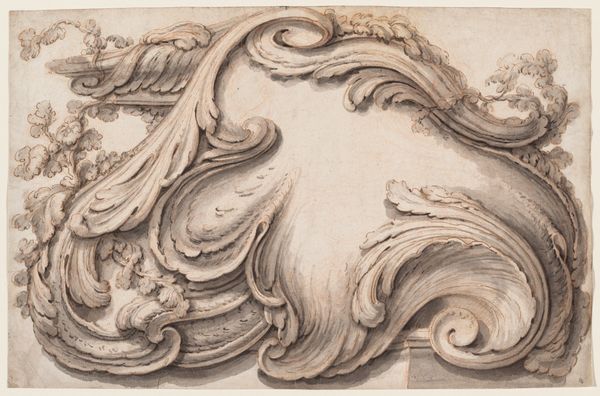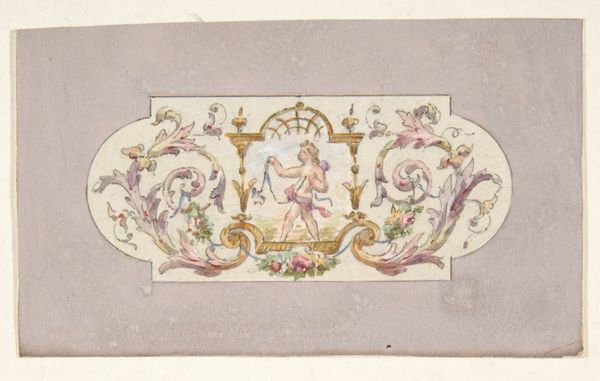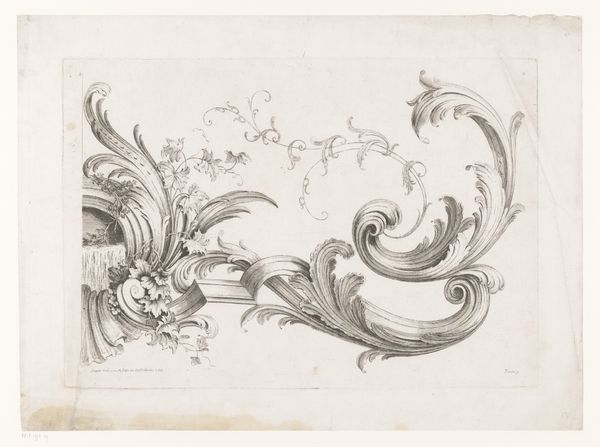
Design for a Decorative Panel with a Flutist (recto); Design for molding (verso) 1695 - 1705
0:00
0:00
drawing, print, ink, pen
#
portrait
#
drawing
#
baroque
#
ink painting
# print
#
human-figures
#
figuration
#
ink
#
line
#
pen work
#
pen
#
decorative-art
Dimensions: 9 5/8 x 14 1/8 in. (24.5 x 35.9 cm.)
Copyright: Public Domain
Gilles-Marie Oppenord made this design for a decorative panel in the early 18th century, using pen and brown ink on paper. While seemingly a conventional drawing, its true purpose was to guide artisans in the creation of elaborate architectural ornament. Note the incredible detail achieved with just simple lines. Oppenord’s skill lay in translating his vision into a language that craftsmen could follow, dictating forms for wood carving or stucco work. The design brims with playful Rococo motifs—floral swags, whimsical figures, and asymmetrical curves. Each element would have demanded specialized expertise, from carving foliage to rendering human forms. The social context here is key. Oppenord, as an artist, was at the top of a pyramid of skilled labor. His drawing initiated a cascade of activity, channeling the work of many hands toward a unified aesthetic effect. The drawing is not only a design, but also a document of social relations. By understanding this, we can move beyond the traditional boundaries between art, craft, and the wider world of work.
Comments
No comments
Be the first to comment and join the conversation on the ultimate creative platform.
